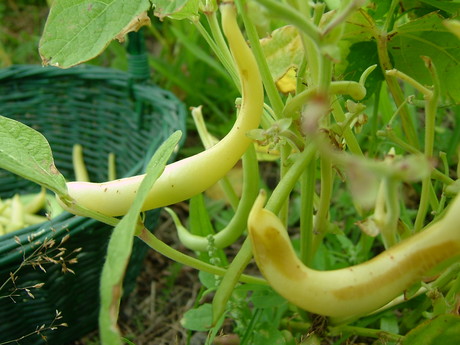The season of the bean
Dealing with the excess in a productive way

The main crop is growing in a new patch of garden that was converted from pasture last winter. The soil is reasonably good, with a little gravel, but the position is rather exposed to both wind and sun. Keeping water up has been a challenge as we do not have a lot go go around.

The process with to trim the pointy ends and stems and then dice the pods into bite sized pieces. This is the most time consuming part of the job.

As we wanted to have loose or free flow diced beans in a large freezer bag the contents of the pot were spread on a tray and placed in the freezer until things had started to crisp up. At that point (an hour or 2 should be plenty) they are tipped into the bag and given a shake.

